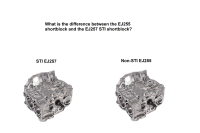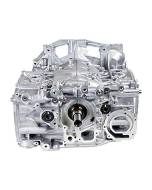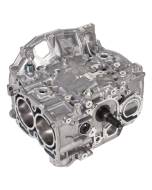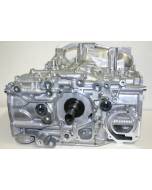We use cookies to make your experience better. To comply with the new e-Privacy directive, we need to ask for your consent to set the cookies. Learn more.
What is the difference between an EJ255 and an EJ257?
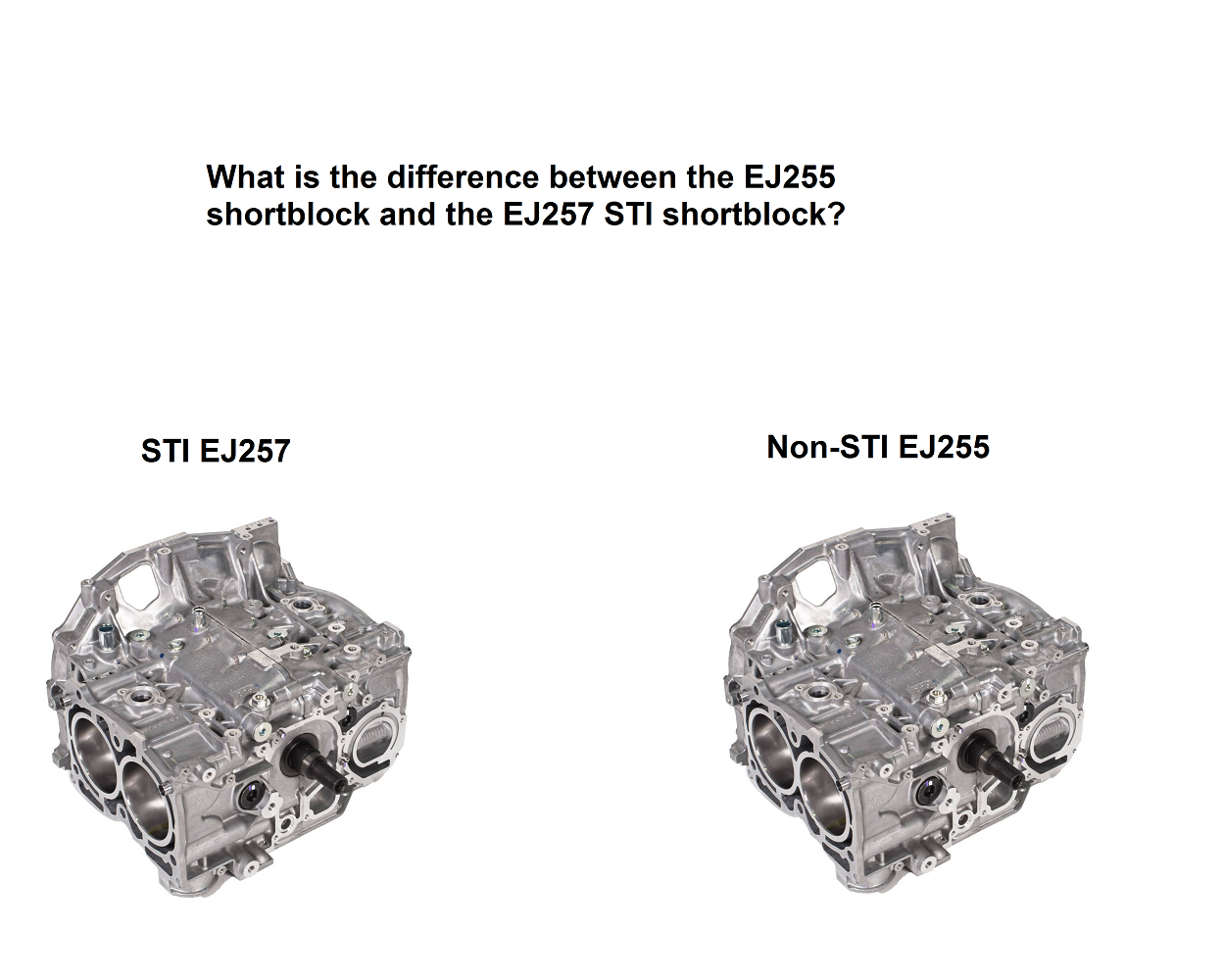
In the US, the only car that has an engine designated as an EJ257 is the STI. All of the other 2.5 liter turbo EJ series engines are designated EJ255. To look at what the differences are, we’re going to look at this in two segments, 2002 – 2007 or GD chassis STI’s first, and then 2008 – 2014 or GR chassis STI’s.
For the years of 2002 through2007, there were a few Subaru’s that had 2.5 liter turbo engines. Those are the STI, the Legacy GT, the Forester XT, the Outback XT, and the Baja Turbo. Even though there were some different turbo and intercooler options between these models, all of these engines were running single AVCS, with AVCS being on the intake cams only.
As I said, the STI was the only car that had the engine designation of EJ257. But it turns out that there were a number of cars in the first 2 years of production that actually had the same engine as the STI. One of the easiest ways to tell is that the STI, and these other cars, used B25 heads, and had an 8.2:1 compression ratio. For those early years, here are the cars that had an engine designated as an EJ255 that was actually the same as the engine that was in STI.
2004 – 2005 Forester XT
2005 – 2006 Legacy GT
2005 – 2006 Outback XT
For those production years, the engines were the same from the case, rods, and pistons, up to the B25 heads and cams. The only difference between them was the turbo and intercooler set-up, and the tuning of the ECU.
Starting with the 2006 – 2007 WRX and Forester XT, this was the first point where the EJ255 actually started to receive different parts from the STI.
The production cars that received the new EJ255 with different parts in this year range are as follows:
2006 – 2007 WRX (now a 2.5 liter engine)
2006 – 2008 Forester XT
2007 – 2009 Legacy GT
2007 – 2009 Outback XT
These newly designed EJ255 engines started using a new head casting designated D25. They still had AVCS on the intake cams only, and it is worth mentioning that the single AVCS cams are the same through this production range across all engines. The key difference in the new EJ255 with the D25 heads is the fact that the D25 heads had a smaller combustion chamber volume (approximately 51cc’s down from ~56cc’s in the B25 heads) and they also saw the introduction of secondary air induction that required new ports in the heads.
The new engine had a compression ratio 8.4:1 which was just a slight increase from the 8.2:1 in the STI (Which has remained unchanged in the STI up to the 2019 model year). With the smaller head volume, the new EJ255 kept the bump in compression to a minimum by using pistons with a deeper dish on them. But those were the only significant differences. The case, crank, and rods, as well as the camshafts as mentioned previously, are the same between the EJ257 and EJ255 in these production years.
Because of the difference in piston dish and combustion chamber volume, it is not recommended to pair a D25 head with an STI block, or one that was designed to work with B25 heads.
It is also worth mentioning that in 2007, the STI saw the introduction of secondary air injection which required Subaru to make a new head casting. These new heads were designated V25 heads, and the only difference between the previous heads was the addition of the secondary air ports. The compression chamber volume is the same between the B25 and V25 heads. The V25 head is the only single AVCS STI head.
Now, to look at 2008 – 2014
In 2008, the STI received a more significant up-date to its engine, that mostly involved another redesign of the heads to include AVCS on the exhaust cams in addition to the intake cams. These new dual AVCS heads are designated W25 heads, and they also support secondary air injection. The combustion chamber volume is still the same in the W25 heads as it was in the previous STI heads, so the STI still runs an 8.2:1 compression ratio. Only the STI has ever had W25 heads, and they have been on the STI and remain almost entirely unchanged from the 2008 model year through the 2019 model year.
The 2.5 liter turbo non-STI models from 2008 to 2014 continued to get the 8.4:1 compression EJ255 engine, and there were not any significant changes that were introduced in this year range.
Looking at the engine shortblock in these years, there is only one significant change worth mentioning. In 2009, Subaru introduced the nitride-treated crankshaft for the 2.5 liter turbo engines. There is not difference in bearing design (they are all 5th position thrust bearings) or stroke of the crank. Subaru simply started applying a surface hardening treatment to the cranks. The Surface treated cranks can be retro-fit into the older blocks, and starting roughly around 2011, all of the new blocks that Subaru assembled received the surface treated cranks even if the car did not originally receive them.
When Subaru introduced this new crankshaft, they did put in new rods in the STI that were designed to be slightly stronger than the previous rods, but they are still not as strong as most aftermarket rods.
To sum up these changes:
2008 STI – Received new W25 heads with dual AVCS, still with 8.2:1 compression ratio.
2009-2019 STI – Received new surface treated crankshaft with slightly more durable rods.
2008 – 2014 WRX and all other EJ255 engines – unchanged from previous, and still using D25, single AVCS cams, and 8.4:1 compression ratio.
- Jon Cooley

